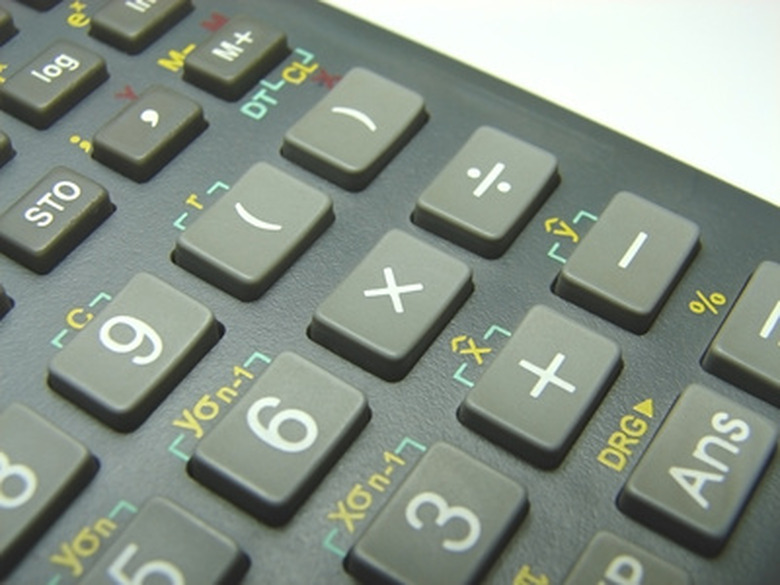How To Calculate Relative Standard Error
The relative standard error of a data set is closely related to the standard error and can be computed from its standard deviation. Standard deviation is a measure of how tightly packed the data is around the mean. Standard error normalizes this measure in terms of the number of samples, and relative standard error expresses this result as a percentage of the mean.
Step 1
Compute the mean of the sample by dividing the sum of the sample values by the number of samples. For example, if our data consists of three values–8, 4 and 3–then the sum is 15 and the mean is 15/3 or 5.
Step 2
Compute the deviations from the mean of each of the samples and square the results. For the example, we have:
(8 – 5)^2 = (3)^2 = 9 (4 – 5)^2 = (-1)^2 = 1 (3 – 5)^2 = (-2)^2 = 4
Step 3
Sum the squares and divide by one less than the number of samples. In the example, we have:
(9 + 1 + 4)/(3 – 1) \= (14)/2 \= 7
This is the variance of the data.
Step 4
Compute the square root of the variance to find the standard deviation of the sample. In the example, we have standard deviation = sqrt(7) = 2.65.
Step 5
Divide the standard deviation by the square root of the number of samples. In the example, we have:
2.65/sqrt(3) \= 2.65/1.73 \= 1.53
This is the standard error of the sample.
Step 6
Compute the relative standard error by dividing the standard error by the mean and expressing this as a percentage. In the example, we have relative standard error = 100 * (1.53/3), which comes to 51 percent. Therefore, the relative standard error for our example data is 51 percent.
Cite This Article
MLA
, George Townsend. "How To Calculate Relative Standard Error" sciencing.com, https://www.sciencing.com/calculate-relative-standard-error-6899277/. 24 April 2017.
APA
, George Townsend. (2017, April 24). How To Calculate Relative Standard Error. sciencing.com. Retrieved from https://www.sciencing.com/calculate-relative-standard-error-6899277/
Chicago
, George Townsend. How To Calculate Relative Standard Error last modified March 24, 2022. https://www.sciencing.com/calculate-relative-standard-error-6899277/
